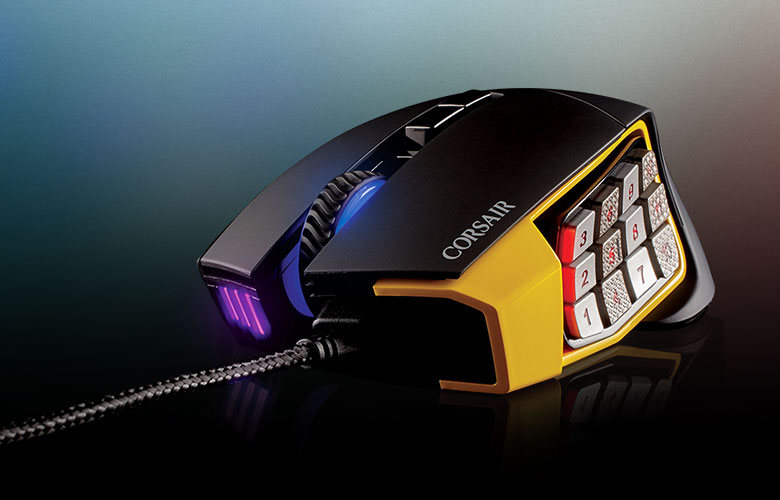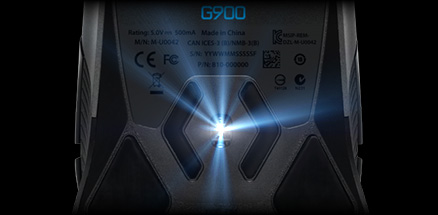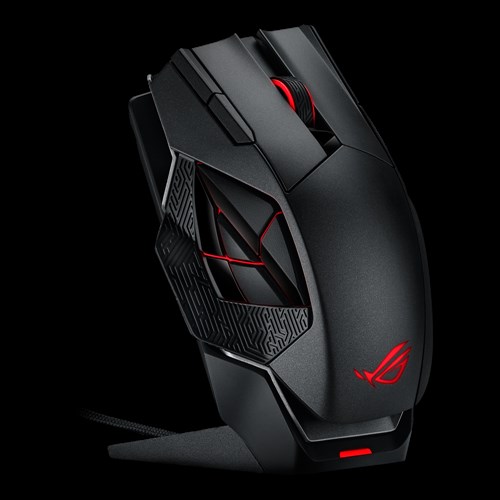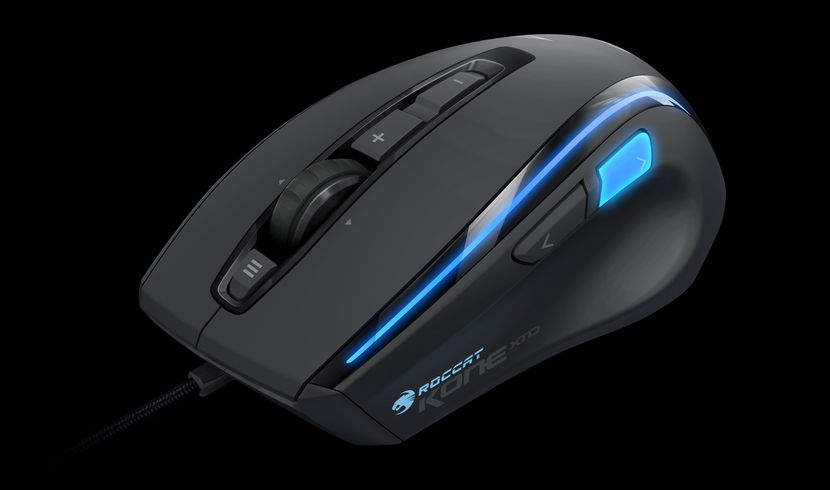What to look for in a gaming mouse


You’re thinking about buying a gaming mouse, or maybe you use a computer for work, and you’re tired of cheap low-quality mice. In either case, you’ve come to the right place.
There are quite a few factors to take into account when selecting the best mouse for the way you game or use your computer. There are also plenty of buzzwords and marketing nonsense to trip you up along the way.
Clear all of that junk out of your head. Think of how you plan on using your computer, or which types of games you play most, and keep an open mind. You might end up finding something unexpected is best.
What makes a mouse a gaming mouse?
So, what really is a gaming mouse? It’s harder to define than you think. Just because a mouse looks super sleek, is covered in decals, or lights up like a Christmas tree doesn’t necessarily make it a proper gaming mouse.
Then again, a gaming mouse isn’t always specifically tailored for gaming either. Most of the time, gaming mice are just mice on steroids.
Every regular feature in a mouse is improved in a gaming mouse — gaming mice are more responsive and they have highly detailed sensors. These mice are also built to be strong, with better plastics, and even metal enclosures sometimes. Manufacturers design gaming mice to eliminate any kind of input lag or delay. Their buttons are heavier and more mechanical, often providing tactile feedback for a click. Even their scroll wheels are beefier and more precise. In short, they’re built to a higher standard.
That’s exactly why even non-gamers who need their computer all day for work should consider using a “gaming” mouse too. No, you don’t need extra buttons to map commands for your favorite MOBA game, but wouldn’t you rather a more comfortable mouse that works the way it’s suppose to all the time. Oh, and you don’t have to trash it after a couple of months.
All of the other more specific “gaming” features are up for grabs. They’re better and worse for each situation. It’s entirely up to you to choose which ones you want.
Laser Beams
Everything is better with lasers. Mice are no exception. Do you remember trackball mice? The jump to optical was massive. The current lasers don’t make quite as much of a difference as that, but they do make a difference.
Accuracy is the name of the game here. Laser mice are much more precise than their optical counterparts. The provide more fluid motion, ideal for gaming and photo editing. Lasers can detect even slight changes, and the work on a wider range of surfaces.
So, why do laser mice work so much better? The infrared laser that they use collects a higher resolution image of the surface it’s on. Higher resolution equates to more dots-per-inch, or DPI.
DPI
High DPI is a tool. Like any tool, for some jobs, it’s perfect. For others, it’s not as great. You can think of DPI is hardware-based mouse sensitivity. Unlike garbage software-based sensitivity controls, DPI is actually accurate.
If you’ve got a mouse with an insanely high DPI, somewhere around 16000, and you move it slightly, a much larger, yet more precise movement will register on the screen. If you play games where absolute precision is key, the higher the DPI the better. The same is true for designers, who need control down to the pixel.
Higher DPI also helps with 4k screens. If you pair a low-end mouse with a 4k screen, the mouse movement might feel sludgy and unresponsive, like it’s literally bogged down.
For some tasks, DPI just doesn’t matter, or might even get in the way. In some games, you don’t want your mouse to be that sensitive. It might cause you to miss a shot or overreact.
The best option here is to take advantage of a feature that many high DPI mice have, a control switch. Lots of mice have a button that lets you throttle the DPI. Find a mouse with a very high DPI laser and a mechanism to control it. This way, you can take advantage of the mouse’s full capabilities when you need to, but you’re not stuck when them in situations where they become awkward.
Polling Rates
The polling rate of a mouse refers to the rate at which it reports its position back to the rest of the computer. Mice measure polling rates in Hz.
Unlike DPI, polling rates hit a point of diminishing returns.
A low polling rate, something around 125Hz, might appear choppy or unresponsive. Most gamers and experts agree that around 500Hz is the “sweet spot.” Some gamers prefer to push things all the way to 1000Hz, but that’s more of a preferential choice than a strictly practical one.
Aim for a mouse with a polling rate of 500Hz or 1000Hz. Any higher(if they exist) is nonsense.
Wired vs. Wireless
This really is a battle between reliability and convenience. It doesn’t matter what the manufacturers say; wireless will never be as reliable as wired. It’s not possible.
Wireless also has the potential for increased latency in communication between the mouse and the computer. All wireless mice use radio waves. They’re not direct, and they’re susceptible to interference.
Manufacturers also understand that wired mice had their problems too. Wires were too short, ugly, and cumbersome. Most wireless mice come with longer wires, often around 6ft. Those cables are usually light weight and come dressed in a braided sleeve.
Wireless has gotten better too. If you do go with a wireless gaming mouse, you’re not going to see it cutting out every 5 minutes or anything. Most wireless mice work flawlessly 99% of the time. As any serious gamer knows, though, that 1% might end up being a big deal.
What Does This Button Do?
Some mice have programmable buttons. Some have way more than others. For most people, these are completely useless. Seriously, a lot of people never use them.
For some types of games, those buttons can be a great convenience. MOBAs, like League of Legends and DoTA2 can benefit greatly from having a couple of mappable buttons on the side of your mouse. There are even MOBA-specific mice, like the Razer Naga Hex V2 and the Logitech G303 Daedalus. They can save you valuable time between rapid-fire button presses.
MMO gamers can also benefit greatly from a mouse with programmable buttons. The Razer Naga and Corsair Scimitar are both excellent choices, sporting a full action-bar worth of side buttons.
RTS gamers and FPS gamers might want a couple of extra mouse buttons. Any more than a few will get in the way and cause more problems than they’re worth.
Weights
Some gaming mice have empty compartments and come with weights that you can use to fine-tune the feel of your mouse.
If you’re a designer or technology professional, this won’t matter to you at all. For gamers, it can be.
Weight is a personal choice based on your gaming style. If you keep your hand firmly on your mouse at all times, the weight probably won’t matter as much. If you flick your mouse around(phrasing), adjusting the weight can make a real difference in how natural and smooth you can move.
Test Drive It
This point can’t be overstated. Test drive your mouse. You can’t tell how a mouse will feel from a picture online. You’ll be spending hours on hours using this mouse every day. Even minor details can become irritating real quick.
Make sure that the mouse fits your hand. Some mice have attachments and adjustments to help here. Check to see if the buttons are easy for you to reach. Test out how fast you can press them.
Even seemingly insignificant details like the texture of the mouse or the sound of the clicks are important. Again, you’re going to be using it a lot.
What Should I Get?
There’s no real way to say which mouse is best for you. You need to find that out on your own. Figure out what you’re going to use the mouse for and what features are most important to you. Then, try to find a store where you can try some of them out.
A quality mouse is important for gaming, and it’s important if you work with your computer for long stretches of time. Plus, a well made mouse can last for years without being a pain to use. That alone is worthwhile.

























3 thoughts on “What to look for in a gaming mouse”
The grip depends entirely on the specific mouse you compare your Dell mouse to. Most of the mice in the list above will be textured well and have a nice finish, but the grip depends on your preferences. As for accuracy, yes the dell mouse you are using probably has acceleration built into the mouse that cannot be turned off, so a good gaming mouse will be more accurate.
The grip depends entirely on the specific mouse you compare your Dell mouse to. Most of the mice in the list above will be textured well and have a nice finish, but the grip depends on your preferences. As for accuracy, yes the dell mouse you are using probably has acceleration built into the mouse that cannot be turned off, so a good gaming mouse will be more accurate.